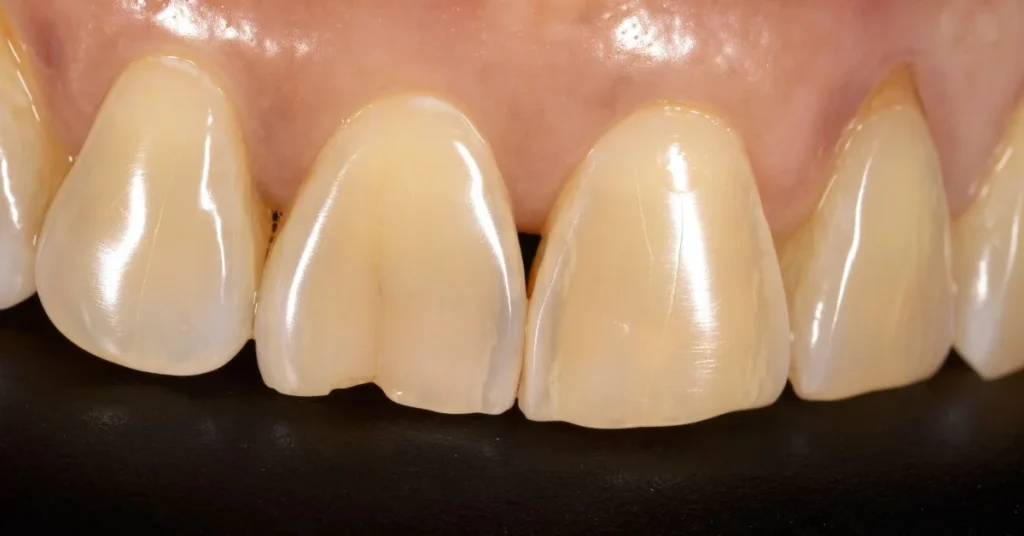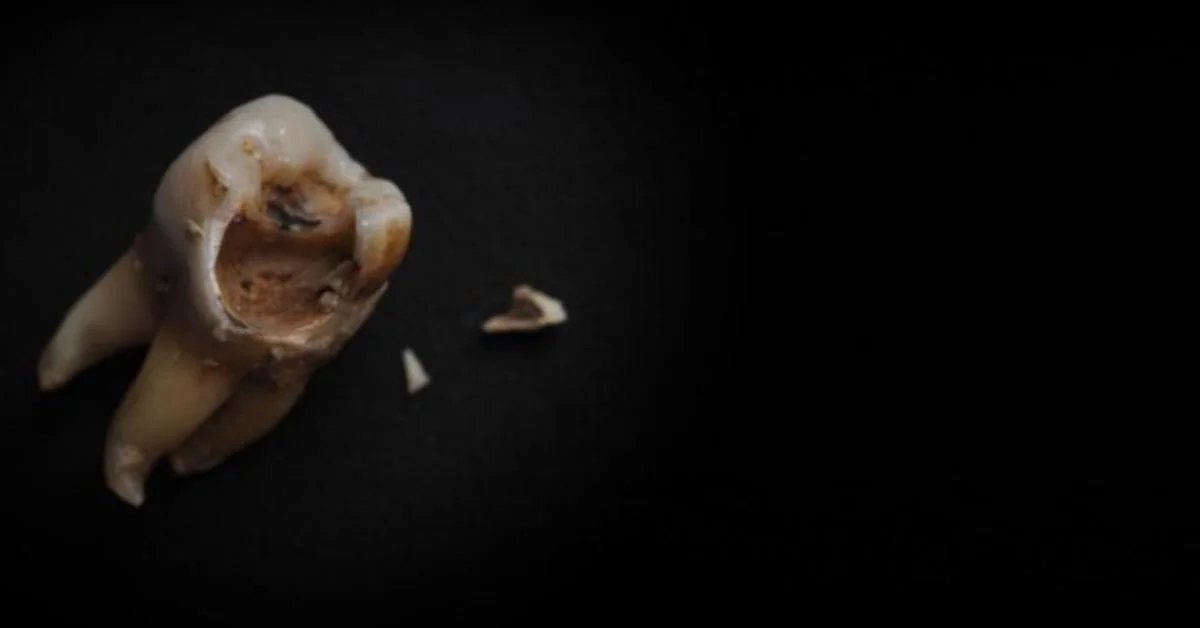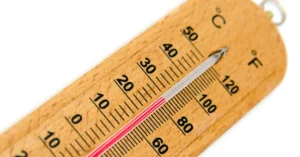A tooth cracked in half with no pain may seem like an odd dental event—urgent, perhaps, but not uncomfortable enough to demand immediate attention. Many people discovering this for the first time wonder whether it’s safe to wait, whether it’s dangerous, or what could have caused it in the first place. But the absence of pain doesn’t mean the situation is benign.
If you’ve found yourself in this situation, the question you’re asking is simple: Can a cracked tooth that doesn’t hurt be serious, and what should I do about it? This article will guide you through a clear, detailed exploration of the causes behind pain-free tooth fractures, what’s happening inside the tooth, the kinds of treatment available, and how to avoid more serious complications later. Even when a tooth isn’t hurting, it’s still part of a living biological structure—and ignoring the problem can have significant long-term consequences.
What Does It Mean When a Tooth Cracks in Half Without Pain?
First, it’s important to define what we mean by a tooth “cracked in half.” This typically refers to a major structural break, where the tooth is visibly split into two parts—either vertically, diagonally, or horizontally. This is not the same as a minor craze line or a small chip. We’re talking about significant damage where the tooth looks separated.
Now, the absence of pain may surprise you. But it often depends on:
- Whether the nerve inside the tooth (pulp) is affected
- Whether the fracture involves the root or is limited to the crown
- The presence of pre-existing dental treatments (such as root canals or fillings)
In many cases, the nerve may already be dead due to previous trauma, decay, or long-standing inflammation. If there’s no living pulp tissue to trigger pain signals, you won’t feel the crack—even if it’s severe.
Common Causes of a Painless Cracked Tooth
A tooth does not crack for no reason. Even in the absence of pain, several underlying factors often contribute:
1. Old Large Fillings
Large amalgam or composite fillings can weaken the surrounding tooth structure over time. The tooth becomes vulnerable to fracture, especially under bite pressure.
2. Root Canal Treatment
Teeth that have undergone root canals are no longer vital (living) and are more brittle. Over time, they become susceptible to cracking under chewing stress—especially if they lack a protective crown.
3. Bruxism (Teeth Grinding)
Habitual grinding or clenching puts excess pressure on teeth, often causing vertical fractures or complete splits, especially overnight.
4. Sudden Bite on a Hard Object
Chewing ice, hard candy, or bones can lead to sudden fractures, particularly in structurally weakened or restored teeth.
5. Trauma
Even a mild blow to the face or jaw can cause internal tooth damage that eventually leads to a painless crack days or weeks later.
6. Age-Related Wear
As we age, teeth undergo cumulative wear and micro-fractures, making them more likely to break, even without warning or pain.
Why There’s No Pain—Yet
You might wonder: if the tooth is cracked in half, why doesn’t it hurt?
The answer lies in tooth anatomy. The central part of the tooth, called the pulp, contains nerves and blood vessels. If the crack doesn’t reach the pulp, or if the pulp is no longer alive, you won’t feel pain. However, this doesn’t mean the tooth is safe. A cracked tooth can:
- Expose the inner dentin to bacteria
- Accumulate food debris and promote decay
- Affect neighboring teeth or gum tissues
- Eventually lead to infection, swelling, or abscess
Pain is not the only signal that something is wrong. Often, a painless cracked tooth is the calm before a storm.

Types of Tooth Cracks
Understanding the classification of tooth cracks helps in assessing severity and urgency. Here are the most relevant types when it comes to a tooth cracked in half:
1. Split Tooth
- The tooth is divided into distinct segments.
- Often involves both the crown and root.
- Usually not salvageable as a whole, but parts may be treated.
2. Vertical Root Fracture
- Runs from the root upward; may be completely painless.
- Often found incidentally on X-rays.
- Can cause bone loss over time.
3. Fractured Cusp
- A part of the chewing surface breaks off.
- Common in molars with large fillings.
- Often painless and repairable.
4. Oblique Crack
- Runs diagonally through the tooth structure.
- May or may not reach the pulp.
- Repairability depends on depth and location.
What Should You Do If Your Tooth Cracked in Half and It Doesn’t Hurt?
Even without pain, a Tooth Cracked is a dental emergency in slow motion. Here’s a step-by-step plan:
Step 1: Save the Pieces (If They Detach)
If part of the tooth has fallen off, store it in milk or saline and bring it to the dentist. It may not be reattached, but it can help in diagnosis.
Step 2: Call Your Dentist Immediately
Even if you feel no pain, you need an urgent exam. Your dentist will likely:
- Take X-rays to assess root involvement
- Perform percussion and vitality tests
- Evaluate the possibility of restoration vs. extraction
Step 3: Protect the Tooth Temporarily
While you wait:
- Avoid chewing on that side
- Stick to soft foods
- Consider using a dental wax or over-the-counter filling material to cover sharp edges
Treatment Options Based on Severity
1. Dental Bonding or Filling
- For minor cracks or fractured cusps
- Tooth-colored composite resin rebuilds the lost structure
- Best for non-load-bearing areas
2. Crown (Cap)
- Often used for cracked teeth that don’t involve the root
- Protects and reinforces weakened structure
- Long-term durability
3. Root Canal + Crown
- If the crack extends into the pulp
- Removes infected tissue, followed by full coverage restoration
4. Tooth Extraction
- Necessary when:
- Crack reaches below the gum line
- Tooth is split vertically
- Structure is too compromised to restore
In some cases, a portion of the tooth (e.g., one root of a molar) can be saved and restored while removing the fractured segment—a procedure called hemisection.
Long-Term Consequences of Ignoring a Cracked Tooth
It bears repeating: no pain does not mean no problem. Delaying treatment can lead to:
- Bacterial infiltration and infection
- Abscess formation
- Bone loss
- Gum disease
- Loss of neighboring teeth due to inflammation or spreading infection
You may also lose options that were once viable. A tooth that could have been crowned might later require extraction if left untreated.
Psychological and Financial Impacts
Letting a cracked tooth go untreated can lead to unexpected stress and cost later:
- Emergency dental visits are more expensive than scheduled care
- You may require surgery or implants
- Anxiety over sudden pain or visible aesthetic changes can affect confidence
- Chewing changes and dietary limitations can reduce quality of life
Proactive care preserves both your wallet and well-being.

Preventing Future Tooth Cracks
While not all cracks are preventable, many arise from manageable behaviors and risks.
Prevention Tips:
- Avoid chewing hard objects (ice, popcorn kernels, pens)
- Treat teeth grinding with a night guard
- Regular dental checkups to catch early stress fractures
- Crown teeth after root canals, especially molars
- Address clenching and stress-related habits
- Maintain good oral hygiene to prevent decay-related structural weakness
Conclusion
A tooth cracked in half with no pain is a deceptive dental problem—one that quietly undermines the structure of your mouth until it becomes too big to ignore. Even in the absence of discomfort, this kind of damage demands immediate professional evaluation and intervention. The earlier the problem is identified, the broader and less invasive your treatment options.
Understanding the biological reasons why pain might not be present, the progression of untreated fractures, and the full spectrum of modern restorative techniques can empower you to take control of your oral health. Remember: your teeth may not complain, but they never lie. A visible crack is a message—and your best response is not to wait, but to act.
FAQs
1. Is it normal for a tooth to crack and not hurt?
It’s not uncommon. If the nerve is dead or the crack doesn’t reach sensitive areas, you may feel no pain. But it still requires immediate dental attention.
2. Can a cracked tooth heal on its own?
No. Teeth are not like bones—they cannot self-heal. A cracked tooth will either worsen or develop complications over time if untreated.
3. What’s the best treatment for a cracked tooth?
Treatment depends on the depth and location of the crack. Options range from bonding to crowns, root canals, or extraction if severe.
4. Can I still eat normally with a cracked tooth?
It’s best to avoid chewing on the affected side. Hard or sticky foods can worsen the crack or break the tooth further.
5. How much does it cost to fix a cracked tooth?
Costs vary:
- Filling: $150–$300
- Crown: $800–$2,000
- Root canal + crown: $1,500–$3,000
- Extraction + implant: $3,000–$6,000
Early treatment is always more affordable than delayed emergency care.
For more information, click here.









